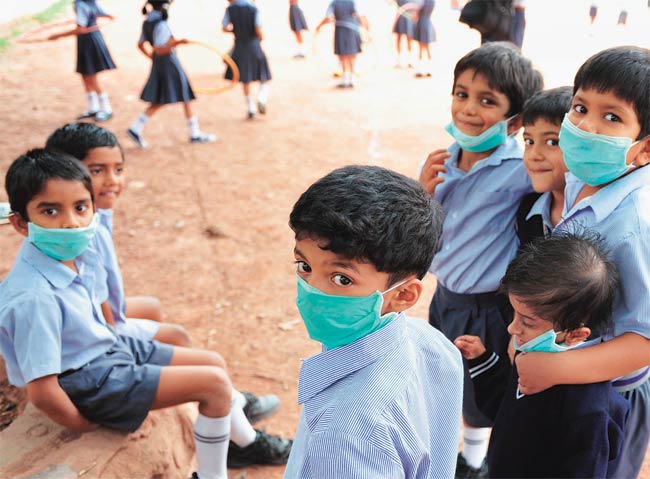The market ensures that individualised solutions to collective problems bar us from making collective, long term transformations towards environmental sustainability.
Priyanka Yadav | The New Leam

Post-2014, the Indian market started flooding with air purifying equipment to deal with the deteriorating air quality especially in metropolitan cities like Delhi, Mumbai etc. Different kinds of brands and different types of air purifiers very soon were flooded in the market as the demand became higher. People usually buy these airs purifying equipment for their homes, offices or institution buildings. Usually the cost of an air purifier starts from 20,000, which is the lowest range and further the cost goes higher and higher up to lakhs. This equipment does not have a mass ownership as only few people have the privilege to use this device pertaining to factors like affordability and maintenance. Therefore more than a gadget to purify air it also a privilege of the few. Besides the debate of affordability of air purifiers and the need for air purifiers, we rather need to ask ourselves an important question. Is air purifier the real solution to the massive and life threatening problem of air pollution in the country? Ideally the answer is no, it is not. Air purifiers do not provide any solution to the problem of pollution it only blinds the problem for a period of time.
Top of it this gadget which is otherwise created to deal with pollution in away is accentuating the problem further rather than providing any cure.
In the first place people do buy air purifiers especially people who have respiratory problems like Asthma use air purifier for precaution. Manufacturers and advertisers sell the gadget with the claim and guarantee that air purifiers will purify the surrounding air. In reality it does not purifies the air it rather emits contaminants to remove the particles from the air that are causing pollution. This process furthers the release of ozone in the air which is even more dangerous than particles causing pollution. Although some manufacturers in the market claim that only some types of air purifiers’ like-ozone generators, electrostatic precipitators and ionizers- emit ozone in home but studies have proved that some electrostatic precipitators and ionizers emit ozone unintentionally as a by-product of their function. Ozone emission by air purifiers further the problem of air pollution and the diseases caused by air pollution like respiratory issues, dizziness, cold, cough, chest pain, throat irritation. Ozone or O3 is a toxic gas which is composed of three atoms of oxygen where two atoms of oxygen form the basic oxygen molecule – which we breathe. The remaining third oxygen atom detaches from the ozone molecule and gets attached to other chemical substance present in the air which leads to a major dis balance in the chemical composition of the air.
High amount of inhalation of ozone can cause major health issues to the human body. Ozone is a harmful substance for both the environment and the living organisms. The damage done to the ozone layer takes the individual or the habitat through a slow process of death and decay. Manufacturers of air purifiers do not mention this but air purifiers do emit ozone from certain to a greater extent. Not only is emission of ozone is the problem related with air purifiers but the fact that air purifiers have high –maintenance cost and sometimes they under- perform- is yet another matter of concern.
Coming back to the question raised earlier in this article, is air purifier the solution? Whether an air purifier does emits ozone or not, the usage of air purifiers cannot be the desirable solution to the ever increasing problem of air pollution. There are two important things to be understood in order to understand the issue of air pollution better:
(a)Air pollution is not a temporary problem; it is an ever-growing and ever increasing issue which can be addressed through a long-term plan of action rather than making ad-hoc adjustments.
(b) Air pollution can’t be addressed by technological or individualised solutions. It needs sustained and grounded initiative.
Every human being, whether rich or poor, breathes the same air, air pollution affects one and all in the same manner more or less. The issue cannot be solved through the purchasing power of middle and upper class consumer.
It is intrinsic therefore for the state to look into this matter of urgent concern that affects one and all equally. It is important to prioritise policies that can help in improving air pollution per se. Industrial projects and vehicular emissions that cause air pollution should be immediately banned. Any practice in the urban or the rural set-up that affects the air quality should be stopped. Innovations or technological advancement that could help in dealing with the issue of air pollution from the root and at large scale should be promoted and funded.
Also not only can air pollution be handled through sustainable policy measures but through the contribution of humanity as well. This is through making sustainable lifestyle choices wherein their luxury and comfort should not come at the cost of our environment. In order to have a sustainable future and ensure a healthy environment for the current and the future generation it is important to wisely look forward to a sustainable yet long term plan of action both by the individuals and the nation-state.













